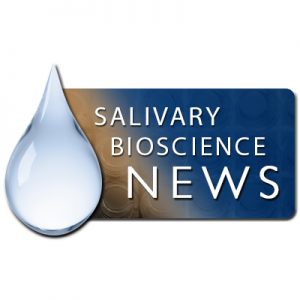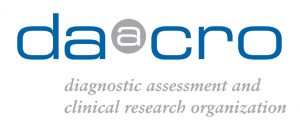*Note: Salimetrics provides this information for research use only (RUO). Information is not provided to promote off-label use of medical devices. Please consult the full-text article.
Differences in HPA axis activity are a function of age and cumulative risk
Individual differences in the activity of the hypothalamic pituitary adrenal axis: Relations to age and cumulative risk in early childhood Author: Holochwost SJ, et al. (2017), Psychoneuroendocrinology This study examined individual differences in the function of the hypothalamic-pituitary-adrenal (HPA) axis with regard to age and cumulative risk during challenging laboratory tasks administered at 6, 12, […]
Association of salivary adiponectin with serum and inflammatory markers
Adiponectin: Serum-Saliva Associations and Relations with Oral and Systemic Markers of Inflammation Author: Riis JN, et al. (2017), Peptides This study addresses gaps in our understanding about the validity and utility of using salivary adiponectin to index serum adiponectin levels. Matched blood and saliva samples were collected on a single occasion from healthy adults (n=99; […]
Adolescent appraisal of interparental conflict is reflected by stress reactivity
Adolescent conflict appraisals moderate the link between marital conflict and physiological stress reactivity Author: Lucas-Thompson RG, et al. (2017), Journal of Research on Adolescence The goal of this study was to advance understanding of how adolescent conflict appraisals contribute uniquely, and in combination with interparental conflict behavior, to individual differences in adolescent physiological reactivity. Saliva […]
Variation in salivary cortisol and alpha-amylase rhythms over 24 months
Long-term stability of diurnal salivary cortisol and alpha-amylase secretion patterns Author: Skoluda N, et al. (2017), Physiology & Behavio This study aimed to investigate long-term stability and variability of diurnal cortisol and alpha-amylase patterns. Diurnal cortisol and alpha-amylase secretion patterns were assessed on a single workday with three waves of measurement across a total time […]
Temperament predicts salivary cortisol and alpha-amylase in BASE jumpers
Stress reactivity and personality in extreme sport athletes: The psychobiology of BASE jumpers Author: Monasterio E, et al. (2016), Physiology & Behavior This is the first report of the psychobiology of stress in BASE jumpers, one of the most dangerous forms of extreme sport. We tested the hypotheses that indicators of emotional style (temperament) predict […]
Douglas A. Granger, Ph.D., to Join DAACRO’s Scientific Advisory Board
(May 17, 2017) With the addition of psychoneuroendocrinology researcher, Douglas A. Granger, Ph.D., DAACRO’s advisory board continues to cultivate a network of multi-disciplinary scientific experts, enabling access to key scientific knowledge that is required, but not often achieved through traditional Contract Research Organizations (CROs). DAACRO combines CRO standards with psychonneuroendocrine stress expertise, and further enhances [...]Salivary Cortisol variability is influenced by social characteristics of owner and dog
Psychobiological Factors Affecting Cortisol Variability in Human-Dog Dyads Author: Schöberl I, et al. (2017), PLOS One Stress responses within dyads are modulated by interactions such as mutual emotional support and conflict. We investigated dyadic psychobiological factors influencing intra-individual cortisol variability in response to different challenging situations by testing 132 owners and their dogs in a […]
Douglas A. Granger, PhD appointed Chancellor’s Professor
Douglas A. Granger, PhD, director of the Institute for Interdisciplinary Salivary Bioscience Research and a professor of psychology and social behavior, public health, and pediatrics has been appointed a Chancellor’s Professor. The appointment took effect April 1 and is reserved for exceptional scholars who have demonstrated unusual academic merit and exhibit high promise for continued […]
I love you from the bottom of my hypothalamus: Pair bonds & the stress response system
I love you from the bottom of my hypothalamus: The role of stress physiology in romantic pair bond formation and maintenance Author: Mercado E, et al. (2017), Social and Personality Psychology Compass Monogamous pair bonds helped solve ancestral problems pertinent to our survival as a species. In order for these pair bonds to succeed, biological […]
Measuring salivary transferrin to determine blood contamination levels
A statistical method to calculate blood contamination in the measurement of salivary hormones in healthy women. Author: Behr GA, et al. (2016), Clinical Biochemistry OBJECTIVES: Previous studies have reported that salivary concentrations of certain hormones correlate with their respective serum levels. However, most of these studies did not control for potential blood contamination in saliva. […]
Salivary cotinine shows personalized outreach improves participation in smoking cessation services
Effectiveness of personalised risk information and taster sessions to increase the uptake of smoking cessation services (Start2quit): a randomised controlled trial. Author: Gilbert H, et al (2017), The Lancet BACKGROUND: National Health Service Stop Smoking Services (SSSs) offer help to smokers motivated to quit; however, attendance rates are low and recent figures show a downward […]
Salivary DNA analysis shows exercise reduces genetic risk for depression and suicidal ideation
A genetic risk factor for major depression and suicidal ideation is mitigated by physical activity Author: Taylor MK, et al. (2017), Psychiatry Research We evaluated associations of five candidate polymorphisms (Bcl1 [rs41423247], -2C/G [rs2070951], COMT [rs737865], Val66Met [rs6265], and 5HTTLPR [biallelic and triallelic [5HTTLPR/rs25531]) with probable MDD and suicidal ideation (SI), the effects of physical […]
Evidence supports studying cortisol and DHEA in concert
Cortisol and DHEA in development and psychopathology Author: Karmin HS, et al (2017), Hormones and Behavior Dehydroepiandrosterone (DHEA) and cortisol are the most abundant hormones of the human fetal and adult adrenals released as end products of a tightly coordinated endocrine response to stress. Together, they mediate short- and long-term stress responses and enable physiological […]
Insulin from Saliva: Salimetrics Launches New Testing Protocol to Supplement Modern Obesity Research
(February 23, 2016) With salivary insulin testing from Salimetrics' SalivaLab, investigators studying diseases associated with adult and childhood obesity such as type II diabetes mellitus, heart disease, metabolic syndrome, and the biological pathways of insulin now have an easy way to get important biological data from more participants. Today, researchers can fast-track sample collection and [...]Meet daacro, a unique European Salivary Bioscience Consultancy & CRO
Meetings are always a good option to meet and exchange. During the next months, you will find daacro at the following meetings and we would enjoy meeting you at one of these occasions. Let us know if you wish to organize your individual meeting with daacro at: March 02 – 03, 2017 2nd OTC Toolbox […]
 Contact: Salimetrics (USA)
Contact: Salimetrics (USA)



